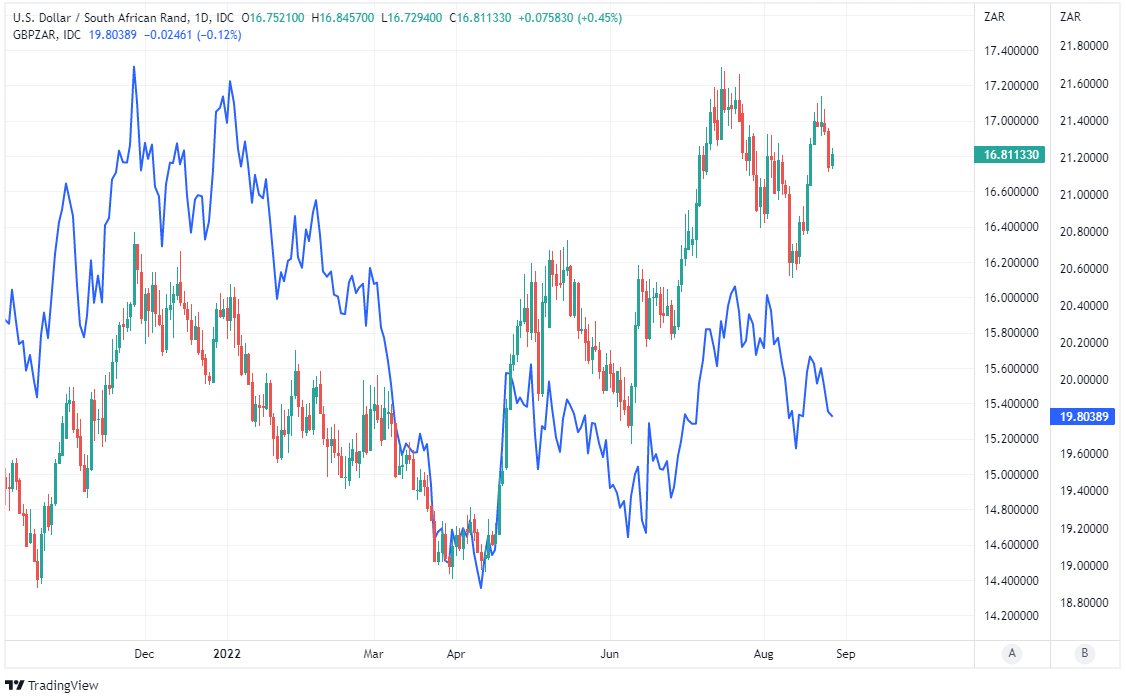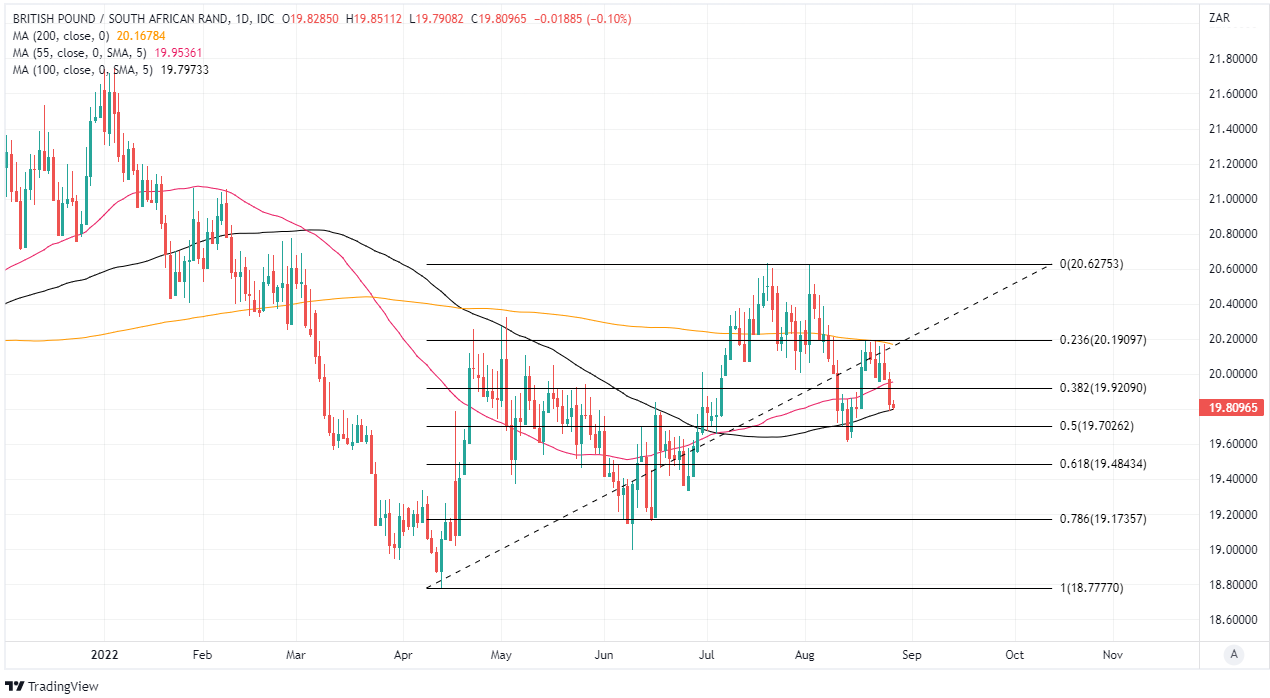South African Rand’s Softer Trend Keeping GBP/ZAR Supported Near 20.70
- Written by: James Skinner
- GBP/ZAR supported near 19.70 & buoyant
- Aided by mid-month climb from USD/ZAR
- USD direction & Fed policy key short-term

Image © Adobe Images
The Rand gave ground to most G20 currencies including an underperforming Pound ahead of the weekend as a rebounding U.S. Dollar sought to perpetuate a decline in South African exchange rates that has been keeping GBP/ZAR buoyant above the 20.70 level in recent weeks.
South Africa’s Rand eased broadly on Friday alongside Sterling, the Japanese Yen, New Zealand Dollar and Chinese Renminbi but was the underperformer as the U.S. Dollar rebounded from the week’s lows ahead of a widely anticipated speech from Federal Reserve Chairman Jerome Powell.
“Looking at the implications for the dollar, we think that markets may find enough reason to push their peak rate pricing a bit closer to the 4.0% mark today and stir away from pricing back more than the current 1-2 rate cuts in 2023, which should ultimately offer some support to the dollar into next weeks’ payrolls release,” says Francesco Pesole, a strategist at ING.
“The downside risks to the dollar are non-negligible today. A more alarming tone on recession and any hints that the Fed will be more considerate when it comes to tightening to avert a major dampening impact on the economy would likely trigger an asymmetric negative reaction on the dollar, considering a rather stretched long positioning and short-term overvaluation, especially against European currencies,” Pesole added.
 Above: USD/ZAR shown at daily intervals alongside GBP/ZAR. Click image for closer inspection.
Above: USD/ZAR shown at daily intervals alongside GBP/ZAR. Click image for closer inspection.
While Chairman Powell’s appearance at the Jackson Hole Symposium gathering of central bankers will be instrumental in determining market sentiment toward the Dollar and many other currencies in the days ahead, the U.S. currency had already shifted back onto the front foot on Thursday.
“It feels like there’s certainly a consensus for at least another 125bps of tightening this year. Fed President Bullard also spoke and cited frontloading and getting the fed funds to 3.75%-4.00%. The comments yesterday were broadly consistent with Fed President Bostic’s,” says Derek Halpenny, head of research, global markets and international securities at MUFG.
Regional Fed presidents including Esther George, James Bullard and Patrick Harker provided further reminder on Thursday that risks around U.S. interest rates remain on the upside when suggesting that borrowing costs could yet be lifted this year to levels not priced-in by financial markets.
Thursday’s remarks continued a trend dating back to the release of U.S. inflation figures for July, which suggested that price pressures moderated notably last month but drew Fed officials onto the speaking circuit after leading markets to reduce their expectations for interest rates this year.
 Above: GBP/ZAR at daily intervals with Fibonacci retracements of April rebound indicating possible areas of technical support for Sterling. Selected moving-averages denote possible areas of support and resistance. Click image for closer inspection.
Above: GBP/ZAR at daily intervals with Fibonacci retracements of April rebound indicating possible areas of technical support for Sterling. Selected moving-averages denote possible areas of support and resistance. Click image for closer inspection.
“The US dollar has undergone a long period of strength since April, when global economic growth forecasts began being widely, and notably revised down for this year and next year. The global interest rate hiking cycle is not near its end, while evidence of weakening economic activity is apparent around the globe,” says Annabel Bishop, chief economist at Investec.
The Dollar rebound interrupted a corrective decline that had pulled USD/ZAR away from August highs when previously the U.S. currency softened and the Rand had risen following the release of stronger-than-expected local employment figures for the second quarter on Tuesday.
Tuesday’s data showed the unemployment rate falling from 34.5% to 33.9% and was followed on Wednesday by other figures suggesting that external and domestic inflation pressures ticked higher in July, cementing in place hawkish market expectations of the South African Reserve Bank.
“Currently the rand averages around R16.75/USD this quarter, against our forecast of R16.60/USD, in a volatile quarter, but also one of mainly rand weakness against the USD. The outlook remains at risk of further shocks, with Europe’s gas supplies at risk, and the outlook for inflation for Europe also of key concern,” Investec’s Bishop said on Thursday.




